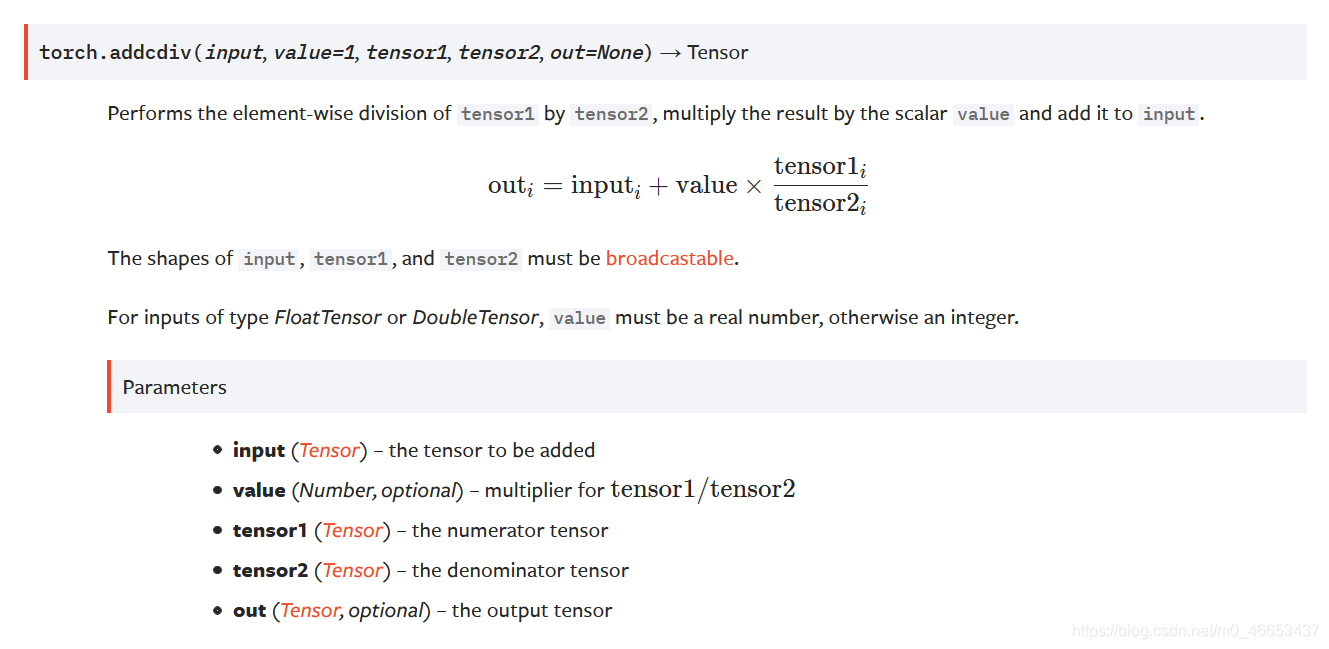参考链接: addcdiv(value=1, tensor1, tensor2) → Tensor
参考链接: torch.addcdiv(input, value=1, tensor1, tensor2, out=None) → Tensor

实验代码展示:
Microsoft Windows [版本 10.0.18363.1316]
(c) 2019 Microsoft Corporation。保留所有权利。
C:\Users\chenxuqi>conda activate ssd4pytorch1_2_0
(ssd4pytorch1_2_0) C:\Users\chenxuqi>python
Python 3.7.7 (default, May 6 2020, 11:45:54) [MSC v.1916 64 bit (AMD64)] :: Anaconda, Inc. on win32
Type "help", "copyright", "credits" or "license" for more information.
>>> import torch
>>> torch.manual_seed(seed=20200910)
<torch._C.Generator object at 0x0000016FC768D330>
>>>
>>> t = torch.randn(1, 3)
>>> t1 = torch.randn(3, 1)
>>> t2 = torch.randn(1, 3)
>>> torch.addcdiv(t, 0.1, t1, t2)
tensor([[ 0.1132, -0.2718, 0.7519],
[ 0.2650, -0.3613, 0.8927],
[ 0.4836, -0.4901, 1.0954]])
>>> t.addcdiv(0.1, t1, t2)
tensor([[ 0.1132, -0.2718, 0.7519],
[ 0.2650, -0.3613, 0.8927],
[ 0.4836, -0.4901, 1.0954]])
>>> t
tensor([[ 0.2824, -0.3715, 0.9088]])
>>> t1
tensor([[-1.7601],
[-0.1806],
[ 2.0937]])
>>> t2
tensor([[ 1.0406, -1.7651, 1.1216]])
>>>
>>>
>>>
>>>